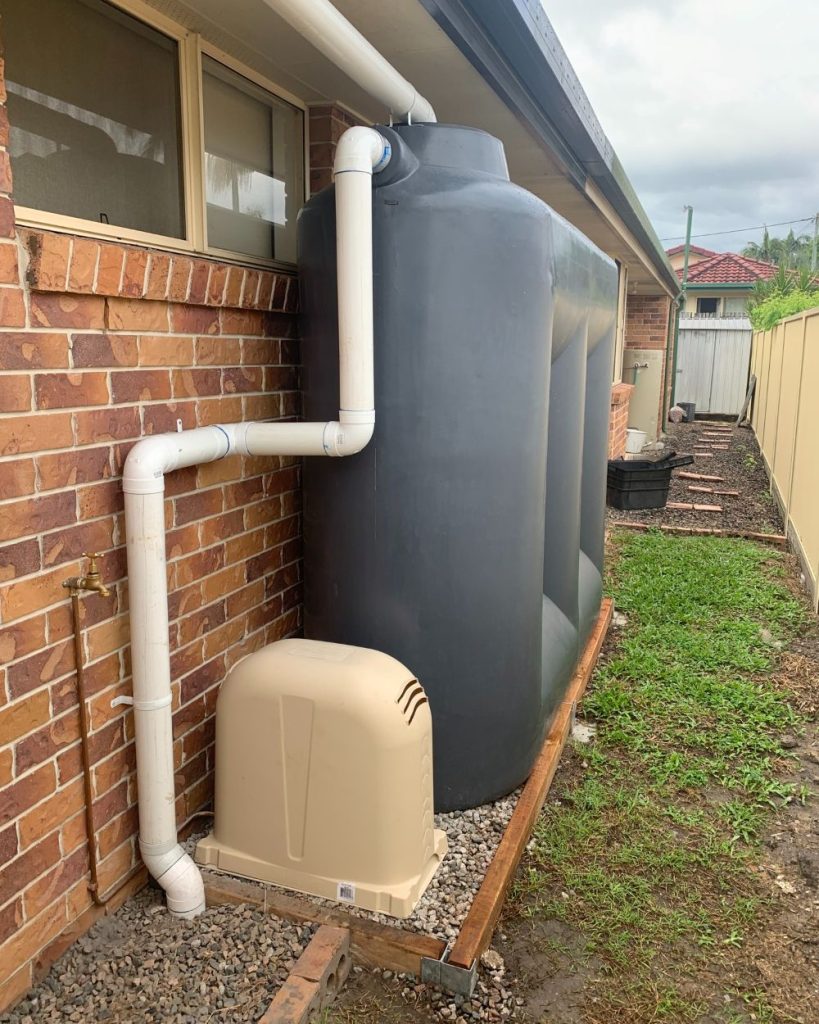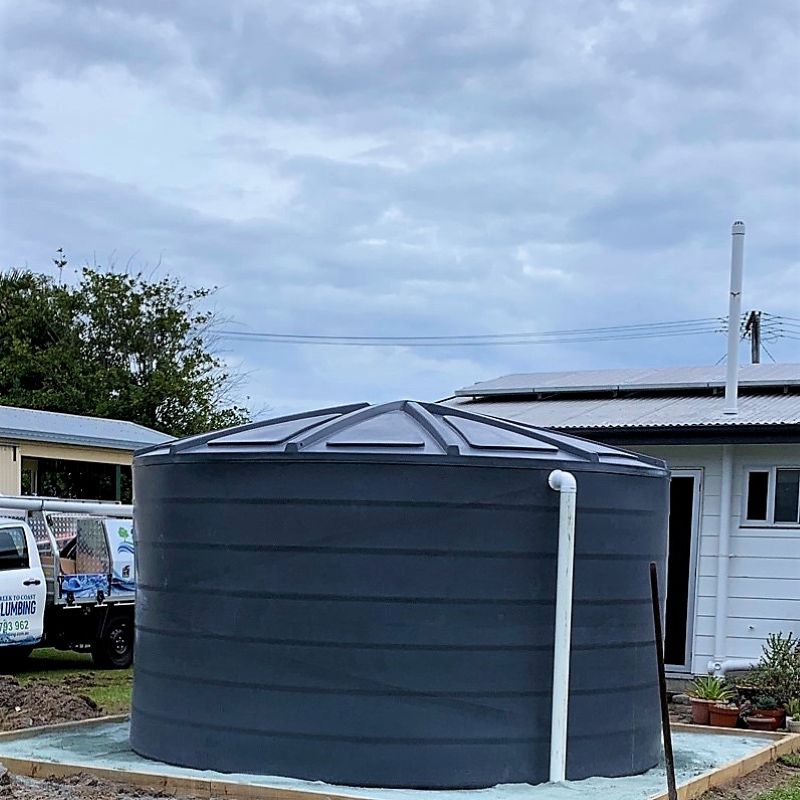Choosing the Perfect Rainwater Harvesting System to Enhance Your Lifestyle and Conserve Vital Water Resources
In Queensland, a growing number of homeowners are embracing rainwater tanks as a strategically beneficial method to cut utility costs, ease the burden on local water systems, and create drought-resilient properties. Before making any investment in a rainwater tank, it’s essential to address a crucial question: What is the actual water demand for your household? Understanding your specific needs is the first step toward making an informed decision.
At Creek to Coast Plumbing, we are dedicated to helping homeowners develop highly efficient rainwater harvesting systems. Choosing the appropriate tank size is a critical component of this important process, ensuring you have enough water supply to meet your household demands without over-investing.

Enhance the Efficiency of Your Rainwater Collection System for Optimal Water Management
Assessing your rainwater collection potential is vital for effective water management strategies. This potential is largely determined by two key elements: the size of your roof area and the average annual rainfall in your region. Gaining a thorough understanding of these aspects is essential for planning a highly efficient rainwater system that meets your needs.
Keep these important specifics in mind:
- On average, each square metre of roof space can collect roughly 1 litre of water for every 1mm of rainfall.
- For a roof size of 200m² with an annual rainfall of 1,200mm, you could theoretically harvest 240,000 litres each year.
However, it is essential to recognize that this number represents an ideal scenario. In reality, various factors such as first flush systems, evaporation, roof slope, gutter design, and overflow can lead to water loss.
To account for these variables effectively, we generally recommend planning for a collection efficiency of 80–90%.
Define Your Uses for the Collected Rainwater: Irrigation, Toilets, or Entire Household Needs?
At this point, practical considerations become paramount. Are you collecting rainwater solely for garden irrigation purposes, or do you plan to utilize it for toilets, laundry, or even to supply all your household’s water needs?
Here are several critical factors to consider:
Calculating the Optimal Tank Size for Your Garden Irrigation Needs
If your primary intention is to irrigate lawns, vegetable patches, or decorative gardens, a small to mid-sized tank (2,000–5,000 litres) will typically suffice.
However, the size of your garden and the prevailing rainfall patterns in your area play significant roles in this decision.
In locales where short, intense rain showers are common, larger tanks may be necessary to capture as much rainwater as possible during these downpours, ensuring you have a sufficient supply.
Effectively Utilizing Rainwater for Laundry and Toilet Applications
Households that incorporate rainwater for toilet flushing and washing machines often find that 5,000–10,000 litre tanks offer substantial benefits. These appliances commonly account for approximately 35–40% of internal water usage, which can lead to significant cost savings over time when rainwater is utilized.
It is vital to include a pump and appropriate plumbing to connect these systems to your home, a service that Creek to Coast expertly manages as part of our comprehensive installation process, ensuring your system operates smoothly and efficiently.

Efficiently Supplying Water to Your Entire Household: Key Considerations
If your goal is complete self-sufficiency or supplying rainwater to all fixtures in your home, you will likely need a tank capacity of 20,000 litres or more, depending on the size of your household and the number of water-consuming appliances. Larger tanks can also provide a reliable backup water supply for emergencies, during dry spells, or when hosting gatherings.
Understanding Household Size: How Many People Live in Your Home?
A useful guideline suggests allocating about 150–250 litres per person per day for general household water usage when utilizing rainwater.
- For a couple: a 5,000–10,000 litre tank is generally adequate.
- For families of four or more: consider 10,000–20,000 litres or larger to ensure an ample supply.
The number of residents in your home will directly affect how quickly your tank depletes, particularly during dry periods when water conservation becomes crucial.
Is Your Roof Area Adequate for Effective Rainwater Harvesting?
The size and layout of your roof play a pivotal role in determining how much rainwater you can effectively collect.
A larger roof area allows for greater capacity to harvest water efficiently.
Additionally, the design of your roof is significant. If your home features multiple roof sections that can funnel rainwater into a single tank, we can design an efficient downpipe system to maximize water capture from all available surfaces, ensuring you get the most out of every rainfall.
For smaller residences or townhouses, slimline or under-deck tanks may be the most suitable choice, and Creek to Coast can assist in identifying the perfect system tailored to your specific requirements.

Key Components for Optimal Rainwater Harvesting: Placement, Guttering, and Overflow Management
Successful rainwater harvesting involves much more than just the installation of the tank itself.
A well-designed system requires several essential elements:
- Robust, well-maintained gutters to prevent blockages and ensure optimal flow
- Leaf guards and first flush diverters to maintain water quality and protect the collected water from contaminants
- Efficient overflow systems that redirect excess water away from your home’s foundations to prevent structural damage
- A secure and level tank pad or stand to support the entire structure effectively
Creek to Coast Plumbing offers comprehensive rainwater system installations, including gutter enhancements, pump connections, stormwater management, and filtration systems, ensuring that your tank is secure and operational from day one.
Ensuring Cleaner and Safer Rainwater for Your Household
We strongly recommend implementing a whole-house rainwater filtration system, especially if you plan to use your collected rainwater for purposes beyond garden irrigation.
The Puretec Hybrid Plus systems, expertly installed by our skilled team, can effectively eliminate sediments, odours, tannins, bacteria, and even adjust the water’s pH to minimize copper leaching and pipe corrosion. Discover the numerous advantages of advanced water filtration for your harvested rainwater and how it can improve your home’s water quality.
Making Informed and Strategic Decisions for Your Rainwater Tank Selection Process
Choosing the right rainwater tank involves more than simply selecting the largest option available; it’s about aligning your system with your roof size, the rainfall patterns in your area, and your individual water usage requirements.
At Creek to Coast Plumbing, we have been assisting Queensland homeowners in establishing sustainable rainwater systems for over 30 years. From determining the ideal tank size and placement to providing complete guttering and filtration solutions, we are committed to ensuring that you maximize every precious drop of harvested rainwater.
The Article: Choosing the Right Size Rainwater Tank for Your Queensland Home first appeared on https://writebuff.com
The Article Choosing the Right Size Rainwater Tank for Queensland Homes Was Found On https://limitsofstrategy.com
The Article Choosing the Right Size Rainwater Tank for Homes in Queensland First Appeared ON
: https://ad4sc.com
Comments are closed